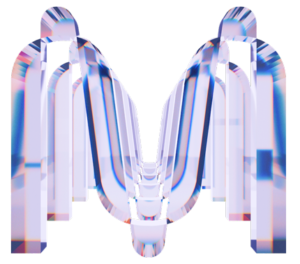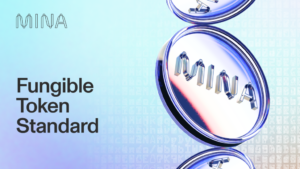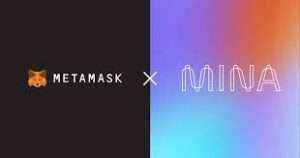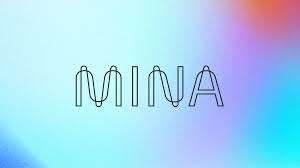Latest News
- Top Gainers and Losers in Cryptocurrency Market
- Never trust AltcoinDaily YouTube channel
- A couple of trades that played out very nice yesterday while trading with the #LegendsProCommunity.$MINA, $HBAR, $BTC, $BRETT, $LINK and a couple of others
- Update: 12 months since investing $51,900 into 60 projects.
Current Price
The current price of MINA is $0.21237
Introduction
Mina Protocol (MINA) presents a distinctive approach to blockchain technology, characterized by its minimalistic design and innovative use of zero-knowledge proofs.
This lightweight architecture not only preserves blockchain integrity but also enhances accessibility for users and developers alike.
While its Ouroboros Samisika consensus mechanism promises robust security and efficiency, the implications for decentralized applications and governance remain to be fully explored.
As we examine the unique features and potential applications of Mina, it becomes essential to contemplate how these aspects position it within the broader blockchain ecosystem.
Quick Overview
- Mina Protocol maintains a constant blockchain size of 22 KB, enhancing accessibility for new validators and users.
- Utilizing zk-SNARKs, Mina ensures transaction validation while preserving user privacy and data security.
- The Ouroboros Samisika consensus mechanism allows for efficient, secure, and scalable transaction processing.
- Mina’s lightweight architecture supports high throughput and rapid transaction confirmation, unaffected by user adoption or transaction load.
- Community-driven governance fosters user participation and accountability in protocol updates and decision-making processes.

Overview of Mina Protocol
Mina Protocol stands out as a pioneering blockchain project that aims to streamline the complexities associated with traditional cryptocurrencies. Unlike conventional blockchain systems that grow in size and become increasingly cumbersome, Mina adopts a succinct design philosophy. It utilizes zero-knowledge proofs to maintain a constant blockchain size of approximately 22 kilobytes, regardless of the number of transactions processed. This innovative approach facilitates greater accessibility and efficiency, enabling users to verify transactions without needing extensive hardware or storage.
The protocol employs a unique consensus mechanism known as Ouroboros Samisika, which combines proof-of-stake elements with a focus on scalability and decentralization. This enables Mina to achieve high throughput while maintaining security and participation from a broad user base.
The implementation of zk-SNARKs allows for privacy-preserving transactions, addressing critical concerns surrounding data confidentiality in the blockchain space.
Moreover, Mina’s architecture supports the development of decentralized applications (dApps) that can interact with off-chain data and services seamlessly. This positions Mina as a versatile platform capable of supporting various use cases, from financial services to identity verification, ultimately contributing to the evolution of blockchain technology.
Unique Features of Mina
What sets Mina Protocol apart from other blockchain projects are its distinctive features that enhance both user experience and system efficiency. One of the most notable characteristics of Mina is its use of zero-knowledge proofs, specifically zk-SNARKs, which allow for the validation of transactions without revealing sensitive information. This guarantees a high level of privacy while maintaining security, positioning Mina as a frontrunner in decentralized identity management and confidential transactions.
Moreover, Mina’s blockchain is designed to remain a constant size of approximately 22 kilobytes, regardless of the number of transactions processed. This feature considerably reduces the barriers to entry for new validators and users, as downloading and verifying the full blockchain is both quick and resource-efficient.
In addition, Mina is built to facilitate the development of decentralized applications (dApps) with ease, providing developers with a robust framework that enhances the functionality and scalability of their projects.
Lastly, Mina incorporates a unique consensus mechanism called Ouroboros Samisika, which combines proof-of-stake and other innovative methodologies to guarantee efficient and secure transaction validation, further distinguishing it from traditional blockchain protocols.
Scalability and Performance
Mina’s approach to scalability and performance is underscored by its network throughput efficiency, which is designed to accommodate a high volume of transactions without compromising speed.
An analysis of transaction speed reveals that Mina’s lightweight blockchain architecture greatly enhances user experience by facilitating rapid confirmations.
Additionally, the layered architecture provides distinct advantages in resource management, allowing for improved scalability as the network expands.

Network Throughput Efficiency
The network throughput efficiency of Mina (MINA) is a critical aspect that influences its scalability and overall performance. Unlike traditional blockchain networks that rely on heavy data to achieve consensus, Mina employs a unique approach using succinct blockchain technology. This enables Mina to maintain a constant size of approximately 22 kilobytes, regardless of transaction volume. Consequently, this design choice enhances network throughput efficiency, allowing for more effective resource utilization.
Key factors contributing to Mina’s network throughput efficiency include:
- Lightweight Blockchain: The compact nature of Mina’s blockchain allows nodes to verify transactions rapidly, reducing the time and computational power required for consensus.
- Recursive Zero-Knowledge Proofs: Mina utilizes zk-SNARKs, which enable nodes to confirm the validity of transactions without needing the entire blockchain. This considerably reduces the data that nodes must process, enhancing throughput.
- Decentralized Participation: Mina’s design encourages more participants to run nodes, effectively distributing the network load and improving overall performance.
Transaction Speed Analysis
Efficiency in transaction speed is a pivotal element in evaluating the scalability and performance of blockchain networks, and Mina (MINA) exemplifies this through its innovative architectural design. Unlike traditional blockchains that rely on extensive data storage and processing, Mina adopts a succinct blockchain model, maintaining a constant size of approximately 22 kilobytes. This lightweight structure enables faster verification times, considerably enhancing transaction speed.
The unique zk-SNARKs technology utilized by Mina allows for rapid validation of transactions without the need for full data retrieval. This cryptographic proof mechanism enables nodes to validate the state of the network efficiently, thereby reducing latency and improving overall transaction throughput. As a result, Mina can support a high volume of transactions per second, making it suitable for applications requiring quick confirmations and real-time interactions.
Furthermore, the network’s performance is not hindered by increasing user adoption or transaction load, as the small size of the blockchain guarantees that full nodes can quickly synchronize and operate at ideal speeds. This scalability potential positions Mina favorably within the competitive landscape of blockchain technologies, promising enhanced user experiences driven by swift transaction processing capabilities.
Layered Architecture Benefits
A layered architecture presents significant advantages in both scalability and performance for blockchain networks, including Mina (MINA). This approach enables distinct separation of concerns, which is essential for optimizing both transaction processing and data handling.
By isolating various functionalities, Mina can efficiently manage an increasing number of users and transactions without sacrificing speed or reliability.
The benefits of a layered architecture in Mina can be summarized as follows:
- Modular Design: Each layer can be developed, optimized, and updated independently, allowing for iterative improvements without disrupting the entire network. This modularity facilitates faster innovation and adaptation to market demands.
- Enhanced Scalability: The architecture supports parallel processing of transactions, which minimizes bottlenecks. As demand grows, additional resources can be allocated to specific layers, ensuring that performance remains consistent even during peak usage.
- Improved Resource Allocation: By concentrating computational and storage resources at different layers, Mina can optimize performance based on real-time demands, leading to efficient utilization of system resources and reduced operational costs.
Decentralization and Security
Mina’s network architecture is designed to uphold decentralization while ensuring robust security measures are in place.
By employing innovative protocols, the platform mitigates risks associated with centralization and enhances the integrity of transactions.
This section will examine the effectiveness of Mina’s security protocols and their implications for the overall resilience of the network.

Network Architecture Overview
Decentralization and security are pivotal elements in the architecture of blockchain networks, influencing both their resilience and trustworthiness. In the case of Mina (MINA), these aspects are particularly significant due to its unique lightweight design, which aims to maintain a fully decentralized network without compromising security.
Mina employs a succinct blockchain structure, ensuring that even as the network grows, the full node size remains constant at approximately 22 kilobytes. This approach facilitates widespread participation, as users can easily run nodes on standard devices.
The following key aspects highlight Mina’s commitment to decentralization and security:
- Proof-of-Stake Consensus: Mina utilizes a proof-of-stake mechanism, enabling stakeholders to validate transactions and create new blocks, which enhances security while promoting decentralization.
- Zero-Knowledge Proofs: The implementation of zk-SNARKs allows users to prove the validity of transactions without revealing underlying data, thereby preserving privacy and security.
- Community Governance: Mina’s governance model fosters community involvement, allowing users to influence protocol updates and network evolution, reinforcing decentralization.
These features collectively contribute to Mina’s robust network architecture, ensuring a secure and decentralized blockchain ecosystem.
Security Protocols Implementation
Frequently, the implementation of security protocols plays a critical role in safeguarding the integrity of blockchain networks. In the case of Mina Protocol, security is intricately tied to its lightweight design and unique approach to cryptography.
Utilizing zk-SNARKs (zero-knowledge succinct non-interactive arguments of knowledge), Mina guarantees that transaction validation requires minimal data, enabling nodes to verify transactions efficiently without storing the entire blockchain history. This not only enhances scalability but also fortifies security, as the reduced data footprint diminishes potential attack vectors.
Mina’s decentralized consensus mechanism further reinforces its security posture. By leveraging a Proof-of-Stake (PoS) model, the protocol incentivizes participants to act honestly, as validators risk losing their stakes if they act maliciously. This economic model is coupled with a robust incentive structure for community involvement, fostering a more resilient and distributed network.
Importantly, the protocol’s commitment to security is reinforced through regular audits and updates, adapting to emerging threats in the blockchain landscape.
Use Cases and Applications
The potential use cases and applications of Mina (MINA) are diverse and promising, particularly due to its lightweight blockchain architecture. This unique feature enables enhanced scalability and efficiency, making it suitable for various sectors.
Here are three notable applications:
- Decentralized Identity Verification: Mina can facilitate secure and private identity verification processes. Users can verify their identities without revealing sensitive information, which is vital in sectors like finance and healthcare.
- Smart Contracts: The platform supports the development of secure and efficient smart contracts. By utilizing zk-SNARKs, Mina allows for the creation of contracts that execute transactions while preserving user privacy and reducing computational load.
- Data Privacy Solutions: Mina’s architecture can be employed in applications requiring stringent data privacy. For instance, businesses can build applications that allow users to share data securely without exposing the entire dataset, thereby maintaining confidentiality and compliance with regulations such as GDPR.
Community and Ecosystem
Mina’s innovative blockchain technology has fostered an engaged and dynamic community, which plays a pivotal role in its ecosystem’s growth and sustainability. The project has attracted a diverse group of developers, users, and enthusiasts who contribute to its governance and development. This participatory model encourages collaboration and innovation, enabling the community to influence the direction of Mina’s technological advancements and economic model.
Central to Mina’s ecosystem is its emphasis on decentralization and accessibility. The lightweight nature of the blockchain allows a broader demographic to run nodes, lowering barriers to participation. This inclusivity strengthens the network and enhances security, as more users contribute to the validation process.
Additionally, Mina has established various initiatives, including educational programs and hackathons, to nurture talent and encourage active engagement within the community.
Furthermore, community-driven initiatives, such as governance proposals and feedback mechanisms, guarantee that stakeholders have a voice in decision-making processes. This level of engagement not only bolsters community morale but also fosters a sense of ownership and accountability among participants, ultimately driving the ecosystem towards long-term resilience and adaptability in a rapidly evolving blockchain landscape.
Future Prospects of Mina
As the blockchain landscape continues to evolve, Mina is positioned to capitalize on emerging trends and technologies, which could greatly enhance its utility and adoption. The protocol’s lightweight design, which maintains a constant size of just a few kilobytes, makes it particularly attractive in an era where scalability concerns dominate discussions surrounding blockchain technology.
This unique feature allows for easier access and integration into various applications, potentially driving user engagement.
The future prospects of Mina can be outlined in three key areas:
- Scalability Solutions: Mina’s zk-SNARKs technology enables efficient data verification without compromising on security, making it well-suited for decentralized applications (dApps) that require high throughput.
- Interoperability: Mina aims to create a bridge between different blockchain networks, facilitating seamless interactions and expanding its ecosystem’s reach, which is essential for attracting developers and users.
- User-Centric Applications: By focusing on privacy and user sovereignty, Mina can cater to a growing demand for decentralized applications that empower users, thereby positioning itself as a leader in the next generation of blockchain solutions.
These factors collectively suggest a promising trajectory for Mina in the evolving blockchain ecosystem.
Frequently Asked Questions
What Is the Current Market Price of Mina (Mina)?
As of October 2023, the market price of Mina (MINA) fluctuates due to various factors, including market sentiment, trading volume, and overall cryptocurrency market trends. For the latest price, consult a reliable financial news source.
How Can I Purchase Mina (Mina) Tokens?
To purchase MINA tokens, select a reputable cryptocurrency exchange that lists MINA. Create an account, complete any necessary verification, deposit funds, and place a buy order for the desired amount of tokens.
What Wallets Support Mina (Mina) Storage?
Several wallets support the storage of Mina tokens, including the official Mina Protocol wallet, Ledger hardware wallets, and third-party options like MetaMask and Trust Wallet. Each offers varying security features and user interfaces for ideal asset management.
What Exchanges List Mina (Mina) for Trading?
Several cryptocurrency exchanges list Mina (MINA) for trading, including Binance, Kraken, Huobi, and KuCoin. These platforms offer various trading pairs and facilitate liquidity, enabling users to engage effectively in Mina’s market activities.
Are There Any Staking Options for Mina (Mina)?
Staking options for cryptocurrencies typically allow holders to earn rewards by participating in network validation. For Mina (MINA), users can engage in staking through compatible wallets or platforms that support its unique consensus mechanism, enhancing network security.
Wrapping Up
The Mina Protocol exemplifies a transformative approach to blockchain technology through its compact architecture and innovative use of zero-knowledge proofs.
By maintaining a consistently small blockchain size, it enhances accessibility and fosters widespread participation in decentralized applications.
The combination of its Ouroboros Samisika consensus mechanism and community-driven governance underscores its commitment to scalability and security.
As the blockchain landscape evolves, Mina’s focus on privacy and decentralized identity management positions it favorably for future growth and adoption.
